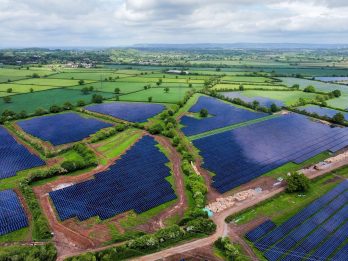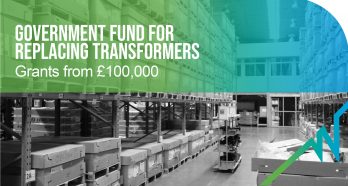Top 5 Renewable Energy Technologies

With the recent release of ‘Our Planet’, on Netflix, Sir David Attenborough delivered an empowering speech at The National History Museum, aimed at all of us, in hope of awakening us to the dilemma we’re currently facing: mass extinction.
The documentary is expected to reach over 1 billion people on Netflix alone, educating and creating further awareness about the importance of our ecosystem, our planet’s survival and how, as humans, we need to act.
For the first time in history, together, we can determine the future of nature. Previously, nature has always dictated the survival of earth’s species but now we have to act to save nature, and renewable energy will play an important part towards the creation of a more sustainable planet.
How can renewable energy help our planet?
The natural world fundamentally matters to each and every one of us, whether we know it or not.
As we are aware, fossil fuels will not last forever and they play a huge part in the pollution of our planet and directly impact upon climate change. Clearly, it’s not only the likes of burning coal which are part of the problem; it spans much wider than that – including the threat of nuclear power.
That’s why renewable energies can be a major contributing factor to the survival of our planet and much of nature, thanks to the revolutionary technologies and ideas we’ve created.
The best renewable energy ideas:
A lot of the best renewable energy ideas are already in place and impacting in a positive way. Meanwhile research continues into ways to reduce emissions and save energy through other more adventurous ideas.
-
Thin film solar
 Solar power is constantly evolving, yet it’s still not utilised enough. Despite the introduction of thin film solar panels, people still seem to refuse to capitalise on the earth’s greatest natural energy source: the sun.
Solar power is constantly evolving, yet it’s still not utilised enough. Despite the introduction of thin film solar panels, people still seem to refuse to capitalise on the earth’s greatest natural energy source: the sun.
These solar panels are efficient and cost effective. By dramatically reducing the thickness, the solar panels become cheaper, easier to transport and more aesthetically pleasing. Not only that but they are also extremely robust, making them more malleable for certain locations.
-
Tidal power
 Utilising another one of nature’s incredible elements to our advantage (much like solar power) is a sure fire way to sustainable future.
Utilising another one of nature’s incredible elements to our advantage (much like solar power) is a sure fire way to sustainable future.
Underwater turbines capture the kinetic energy of the tides and transform it into electricity. Although this isn’t exactly a new concept, the advantages are now being recognised as a tremendously clean and renewable energy source. This is largely due to the predictability of the tides, in comparison to wind power, making it easier to adjust in the winter (when the electricity demand in the UK is at its highest).
You can expect to see more tidal energy plants cropping up across the UK in the very near future. Currently, the UK are responsible for around 50% of Europe’s tidal energy resource. By utilising tidal power to its full potential, it could contribute up to 20% of the UK’s entire electricity demands.
-
Enhanced Geothermal Systems (EGS)
Again, by using the earth’s natural resources, geothermal power technology is a renewable energy that can assist our drive towards sustainability.
Unlike other geothermal power which rely on volcanic or tectonic hydrothermal resources, ESG creates its energy through resources in hot dry rock, embedded anywhere between 500m – 2,5000m underground.
Water is pumped through fractures in the rock, heated naturally and then forced back out at an extremely hot temperature. The heat form the water can be converted into electricity via a steam turbine or binary power plant system.
By cooling the unused water and injecting it back into the rock to heat up again creates a loop able to run 24 hours a day anywhere in the world.
-
Waste to energy
 Combatting what we all contribute to, by developing a solution to the problem, is exactly what waste to energy does.
Combatting what we all contribute to, by developing a solution to the problem, is exactly what waste to energy does.
Landfills are overflowing, everywhere around the world. Humans are wasteful. But capturing that waste and turning it into clean renewable energy is inspiring.
Instead of incineration, waste to energy plants are adopting many scientific treatments such as: gasification, plasma gasification, anaerobic digestion, fermentation production and mechanical biological treatment . These are all much more environmentally friendly and a smarter to solution to an ongoing epidemic.
More interestingly, carbon capture and storage (CCS) has arrived on the scene as a way to significantly limit the amount of CO2 entering our atmosphere, after reducing waste. Implementing CSS at power plants could reduce emissions by upto 90%. The carbon Dioxide released is captured, transported and released (often underground) to prevent large quantities entering our environment.

-
Electric vehicles
With a staggering amount of vehicles (closing in on 2 billion) on on our roads worldwide, the amount of pollution being pumped into our atmosphere is frightening. Therefore, electric vehicles are a welcome addition to a more sustainable future.
Big firms such as BMW, Nissan and Tesla are already making inroads into the electric vehicle market, by making electric vehicles an essential piece of their production line.
Electric charging points are beginning to become more prevalent and, as they do, costs of electric vehicles should fall, making them more accessible for the masses.
Away from such substantial ideas, there are an abundance of other renewable energy solutions which can all contribute in making our societies more energy efficient.
Wilson Power Solutions supporting renewable energy
As a family company with a conscience in providing innovative, sustainable energy infrastructure solution, our environmental responsibility is something we take very seriously.
Through innovation and dedication, we help renewable energy projects achieve great efficiency and help reduce long term costs.
Our energy landscape is changing. The integration of an increasing amount of renewable energy solutions, from a diverse range of sources (i.e. wind, solar, biomass, anaerobic digestion and hydro), all require to be connected to the grid. That’s where we can assist.
Wilson Power Solutions have been providing the renewable sector with purpose designed power transformers (up to 200MVA) for a number of Solar PV and on-shore wind installations across the UK.
Not only that, but in order to harness and better manage your energy, we’ve developed our battery storage to accommodate renewable energy sources which are non-dispatchable (intermittent).
In addition, we also support leading suppliers of small scale on-site generation packages with auxiliary transformers for connection of mainly farm based, ‘one turbine’ wind power schemes in England and Wales. However, we also anticipate how these sorts of networks will require expansion for EV charging stations, which is why we’ve developed ultra efficient transformers to assist.
Our technologies have been recognised, and proven, to save businesses and organisations both energy and money.
 16 Apr 2019
16 Apr 2019IETF: Industrial Energy Transformation Fund – Phase 3
Industrial emissions account for around 18% of UK emissions. To reach the Net Zero target in 2050, industrial emissions need to fall by around 90% from today’s levels. Industrial Energy Transformation Fund (IETF) launched Phase 3 of industrial grants on Monday 29 January 2024, with the closing date on Friday 19 April 2024, and aims […]
 23 Feb 2024
23 Feb 2024Guide to Replacing Transformers
The third part of the Intergovernmental Panel on Climate Change (IPCC) Sixth Assessment Report (AR6) was published earlier this month. Scientists warn that limiting global warming to 1.5°C is beyond reach but restricting temperature rise to no more than 1.5C to 2C could be the range that will minimize the likelihood of reaching critical environmental […]
 22 Apr 2022
22 Apr 2022IETF: Industrial Energy Transformation Fund FAQ
The Industrial Energy Transformation Fund (IETF) was designed by the UK government to encourage energy-intensive businesses to cut their carbon emissions and reduce their energy waste by switching to energy-efficient low-carbon technologies. A budget of £315 million was allocated by the government to be spent through the IETF. BEIS manages England, Wales and North Ireland’s […]
 4 Apr 2022
4 Apr 2022










